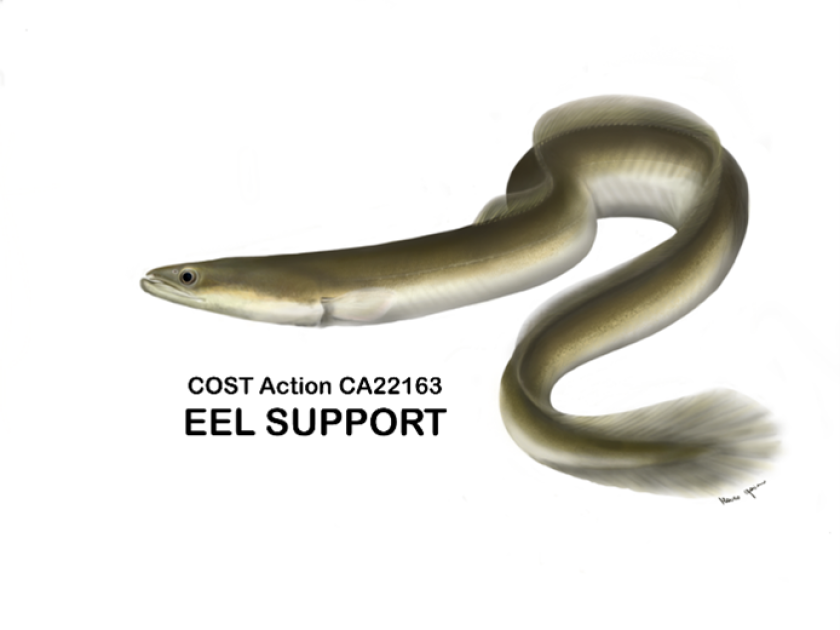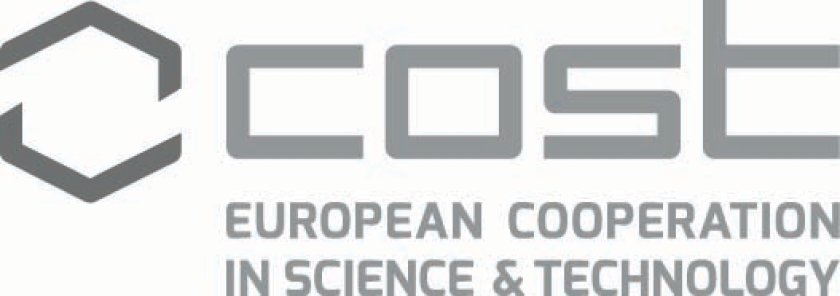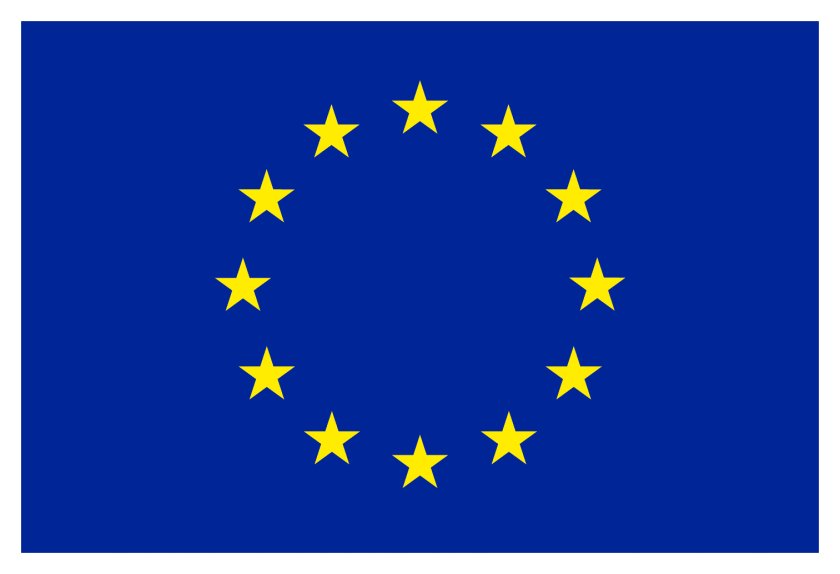
Project
EEL SUPPORT
With our international consortium of partners, we aim to force breakthroughs in the propagation of eel in captivity. EEL SUPPORT will use available networking tools to jointly share the state-of-the-art, to identify knowledge gaps, to develop collaborative strategies to fill the gaps.
World-wide, eel populations have decreased strongly in numbers since the 1970s. The eel farms depend on catches of wild juvenile eels, or ‘glass eels’, which are then raised to market size. Only a restricted number of glass eels is available for aquaculture. Successful propagation in captivity could supply aquaculture with glass eels and close the production cycle. Eel aquaculture can become sustainable then and, by releasing the natural population from fishing pressure, also contribute to sustainable management of the natural population.
Consortium

With our consortium of partners that has tremendous experience in eel research, we aim to share our knowledge and collaborate to force breakthroughs in the propagation of eel in captivity. This is an absolute necessity as the partners currently depend on national funding and lack an international networking umbrella.
Click here to participate
Goals
The COST Action EEL SUPPORT will use the available networking tools to jointly share the state-of-the-art, to identify knowledge gaps, to develop collaborative strategies to fill these gaps, and to synthesize and review this knowledge in order to:
- Design optimal protocols for broodstock conditioning from glass eel to an eel in early puberty, or ‘silver eel’
- Design optimal protocols to artificially mature and propagate the eel to produce larvae
- Design hatchery technology for rearing larvae to the glass eel stage. This way, EEL SUPPORT will contribute to closing the production cycle and supporting sustainable aquaculture and management of natural populations
Call for proposals
Each Action year there is a continuous call for proposals until the annual Short Term Scientific Missions (STSM) budget is finished. The call will open early 2024.
Work group 1: Broodstock conditioning
Objectives
Expertise sharing and collaboration with the purpose of designing an optimal broodstock conditioning protocol from glass eel to pubertal silver eel.
Tasks
1.1) to provide the state-of-the-art of knowledge on broodstock conditioning and to identify knowledge gaps; 1.2) to develop collaborative strategies to fill the knowledge gaps; 1.3) to synthesize and review new knowledge with the purpose of designing an optimal broodstock conditioning protocol.
Activities
Activities aim at using the Action’s tools to fulfil the tasks, mainly organizing WG meetings in relation to task 1.1; Strategic STSMs in relation to task 1.2, and dissemination in relation to task 1.3, on topics such as assessment of broodstock quality; validation of feminization; broodstock nutrition; natural triggering of early maturation by simulated migration; use of steroid implants; broodstock selection, etc.
Work group 2: Induced maturation and reproduction
Objectives
Expertise sharing and collaboration with the purpose of designing an optimal induced maturation and reproduction protocol from silver eel to larvae.
Tasks
2.1) to provide the state-of-the-art of knowledge on induced maturation and reproduction and to identify knowledge gaps; 2.2) to develop collaborative strategies to fill the knowledge gaps; 2.3) to synthesize and review new knowledge with the purpose of designing an optimal induced maturation and reproduction protocol.
Activities
WG meetings will be organised in relation to task 2.1; Strategic STSMs in relation to task 2.2, and dissemination in relation to task 2.3, on topics such as the use of pituitary extracts and recombinant gonadotropins; hormone delivery techniques; alternative methods to induce vitellogenesis; gametogenesis during stimulation of maturation; steroidogenesis; assessment of gamete quality; relations between oocyte lipids and yolk; use of ultrasound methodology; ovulation and egg release; gamete stripping vs. natural spawning; design of spawn tanks; cryopreservation techniques; natural reference for matured eels, etc
Work group 3: Eel hatchery
Objectives
Expertise sharing and collaboration with the purpose of designing the optimal hatchery protocols for raising larvae up to the glass eel stage.
Tasks
3.1) to provide the state-of-the-art of knowledge on hatchery conditions and technology and to identify knowledge gaps; 3.2) to develop collaborative strategies to fill the knowledge gaps; 3.3) to synthesize and review new knowledge with the purpose of designing an optimal hatchery technology.
Activities
WG meetings will be organised in relation to task 3.1; Strategic STSMs in relation to task 3.2, and dissemination in relation to task 3.3, on topics such as hatchery technology for rearing eggs and early larvae; hatchery technology for feeding larvae; epigenetics, proteomics and genomic techniques to study early development; intestinal microbiology; first feeding natural and artificial diets; growth and timing of metamorphosis; glass eel production techniques, etc.
Work group 4: Dissemination and public relations
Objectives
Supporting networking and interaction between participants, collaborative dissemination and relations with stakeholders and the public at large.
Tasks
4.1) to synthesize information and organize dissemination by review papers, presentations, etc. (see section 2.2.2).
Activities
Dissemination and supporting the public relations. A separate WG is required to strategically align the desired use of tools by WGs 1-3.
Dissemination
EEL SUPPORT dissemination includes abstract books and reports related to the organized events and STSMs.
- CA22163 EELSUPPORT STSM Pauline Jehannet in Cesenatico 08-06-2025
- CA22163 EELSUPPORT abstract book annual conference in Cesenatico 29-05-2025
- CA22163 EELSUPPORT STSM report Aleksandra Dobricic in Wageningen 27-10-2024
- CA22163 EEL SUPPORT workshop report with abstracts in Pula 07-10-2024
- CA22163 EELSUPPORT abstract book eel session AQUA2024 in Copenhagen 28-08-2024
- CA22163 EELSUPPORT DGC report IESS2024 in Liverpool 11-07-2024
- CA22163 EELSUPPORT STSM report Laura Gentile in Wageningen 03-07-2024
- CA22163 EELSUPPORT abstract book annual conference in Demre 06-06-2024
Coordination
| Chair | Dr Arjan Palstra |
| Vice Chair | Dr Caroline Durif |
| Science Communication Coordinator | Dr Annalisa Zaccoroni |
| Grant Awarding Coordinator | Dr Sandra Ramos Júdez |
| Gender Equality Coordinator | Dr Vladimir Radosavljevic |
| WG1 Leader | Dr Jonna Tomkiewicz |
| WG2 Leader | Dr Sylvie Dufour |
| WG3 Leader | Ms Laura Gentile |
| WG4 Leader | Dr Annalisa Zaccaroni |
| WG1 co-leader | Mr Justas Dainys |
| WG2 co-leader | Ms Marina Morini |
| WG3 co-leader | Dr Hüseyin Sevgili |
| WG3 co-leader | Dr Pauline Jéhannet |
| WG4 co-leader | Dr Ana Gavrilovic |
Funding
COST (European Cooperation in Science and Technology) is a funding agency for research and innovation networks. Our actions help connect research initiatives across Europe and enable scientists to grow their ideas by sharing them with their peers. This boosts their research, career and innovation.

